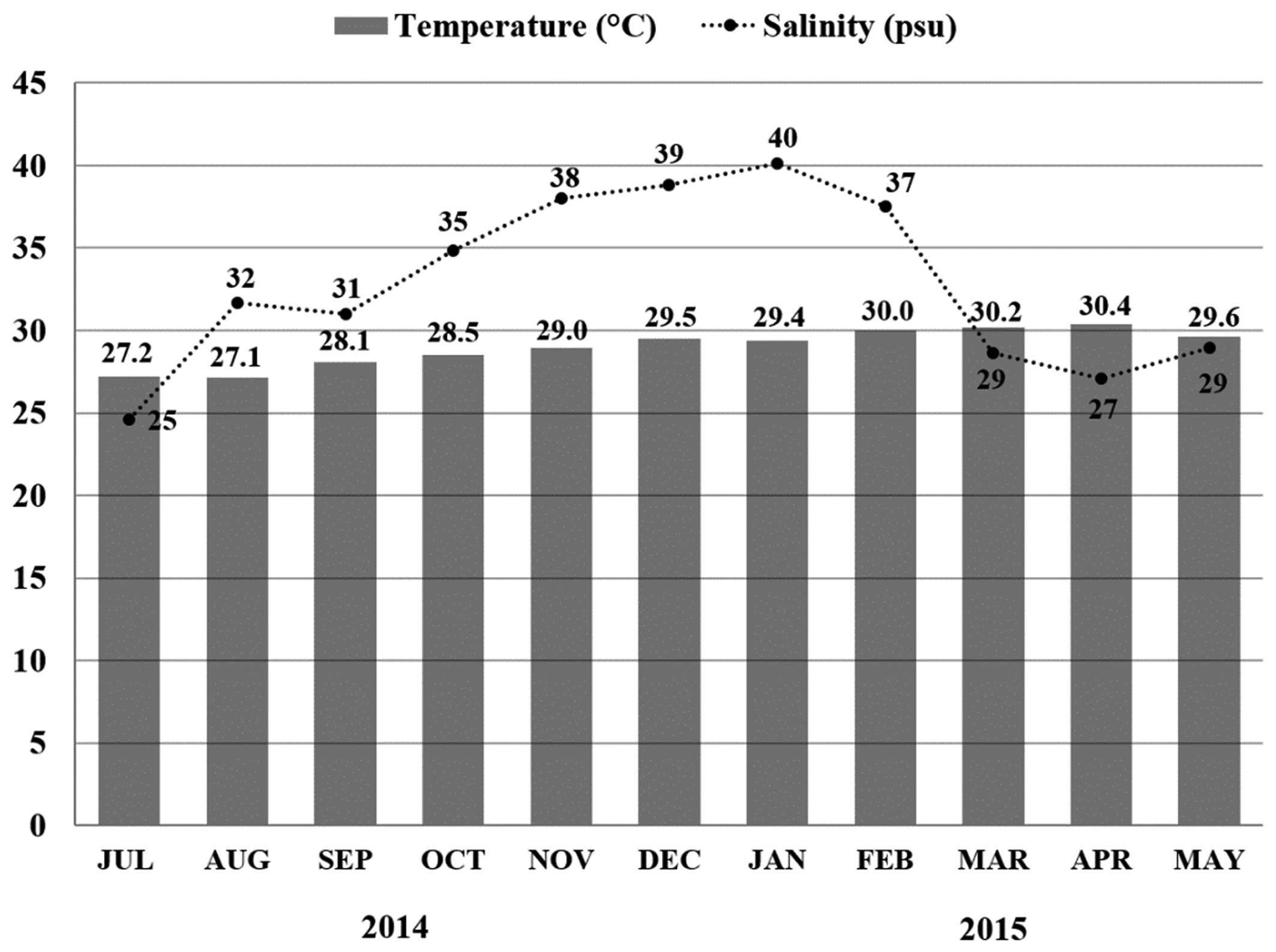Abstract
Bivalve culture is of considerable economic and social interest in northeastern (NE) Brazil. The polyculture is an alternative approach to traditional monoculture for reducing the environmental impact of shrimp farming and improving oyster culture. Perkinsus marinus andPerkinsus olseni were found infecting oysters in NE Brazil and can threaten oyster production. This study evaluatedPerkinsus spp. occurrence in Crassostrea gasar during all production stages. Oyster spats were produced in a hatchery and grown in shrimp ponds in Rio Grande do Norte state.Perkinsus spp. were surveyed by Ray’s fluid thioglycollate medium and confirmed by polymerase chain reaction. Prevalence and intensity of infection were determined in oysters until they reached 7 cm. Results showed that the broodstock was already infected by Perkinsus (60%), but the derived spats were Perkinsus-free. Oyster spats acquired Perkinsus infection when transferred to ponds. The prevalence gradually increased in the seven months following placement in ponds (73%), and then decreased to 17% by the tenth month. The infections were initially mild, but intensity increased at the final growth stage. In conclusion, it is possible to produce Perkinsus-free C. gasar oyster spats from infected broodstock, and their culture in shrimp ponds is feasible.
Keywords:
Crassostrea gasar; hatchery; oyster; polyculture; Perkinsus sp.; sanitary control

 Thumbnail
Thumbnail
 Thumbnail
Thumbnail
 Thumbnail
Thumbnail


